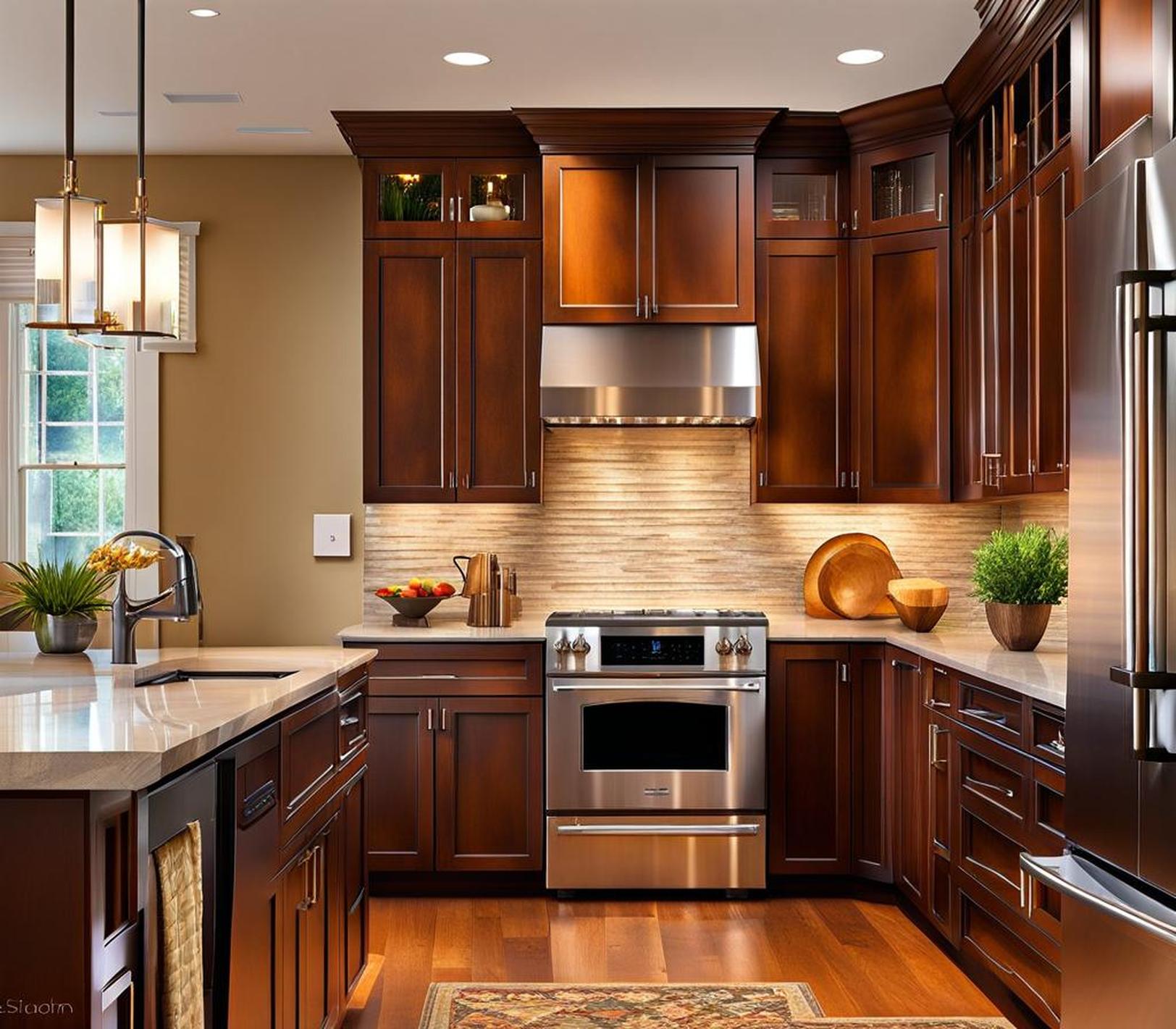When designing or renovating a kitchen, one of the key considerations is determining the ideal depth for your upper cabinets. While the standard depth is typically 12 inches, opting for a customized depth can help maximize both storage capacity and usable countertop workspace. The perfect cabinet depth balances your family’s needs with the unique dimensions of your kitchen. Read on for tips on selecting the optimum upper cabinet depth for your space.
Standard Upper Cabinet Depths
Typical Depth
The most common standard depth for upper kitchen cabinets is 12 inches. This size has been the norm for many years and provides a good amount of storage space without protruding too far from the wall. Twelve-inch deep cabinets are a sensible default choice for the average kitchen.
With a foot of depth, there’s ample room for plates, cups, glasses, and other essential kitchen items. The 12-inch measurement allows cabinet doors and drawers to open fully without colliding into one another or bumping your countertops. This depth is suitable for galley and compact kitchen layouts where space is at a premium.
Pros and Cons of 12 Inches
The benefits of sticking with typical 12-inch upper cabinets include cost savings, leaving more usable countertop landing area, and maintaining a traditional kitchen aesthetic. However, the downside is less interior storage capacity, especially for oversized items. Pots, pans, and small appliances may require creative stacking.
Before increasing depth, first consider organizing your 12-inch cabinets more efficiently. Use range hoods for specialty storage, install pull-out shelves, and maximize vertical space with risers. Glass-front cabinet doors also prevent a cramped look.

When Standard Depth Works Best
Twelve-inch upper cabinets are best suited for:
- Galley, apartment, or small kitchens
- Home chefs who primarily use smaller dishes
- Kitchens with ample countertop workspace
- Budget-friendly kitchen remodels
- Standard-sized cabinetry when replacing existing
The typical 12-inch upper cabinet depth accommodates most average kitchens well. Unless storage is extremely limited, 12 inches tends to offer a good balance for many homeowners.
Customizing Cabinet Depth
Deeper Depth Options
While 12 inches remains popular, many designers are shifting towards slightly deeper dimensions for upper cabinets. Fourteen to sixteen inches is growing in popularity, driven by a need for more interior capacity in contemporary kitchens.
The extra two to four inches over standard depth provides noticeable gains in storage space. Deeper cabinets can more easily house dinner platters, large pots and pans, stand mixers, and other bulky essentials. The additional depth is especially useful for maximizing storage in small, efficient kitchens.
Considerations for Added Depth
When debating going deeper than 12 inches on your upper cabinets, keep these considerations in mind:
- Measure your existing countertop workspace and landing area to ensure adequate room remains.
- Consider the types of dishes, cookware, and appliances you need to store.
- Test different depths using adjustable cabinets or cardboard templates.
- Select extended shelves and hardware to maximize the interior space.
- Account for potential cost increases due to additional materials.
Matching Cabinetry Style
The visual look of deeper upper cabinets can vary depending on door style:
- Full overlay doors with concealed hinges maintain a streamlined, seamless aesthetic.
- Inset cabinetry highlights the extra depth, for a more bold, architectural style.
- Glass-front doors prevent deeper cabinets from appearing too imposing.
Creative design can make even 16-inch deep upper cabinets feel open and airy rather than closed off and heavy.
Extra Deep Upper Cabinet Uses
Pantry Cabinets
For specialty spaces like pantries, an even deeper cabinet depth is common. Full-height pantry units range around 18-24 inches deep on average. This provides ample room for stocking bulk dry goods and other supplies.
Freestanding pantry cabinets are ideal for achieving extra depth while avoiding conflicts with countertops or appliances. Double-door designs allow full access without doors impeding traffic zones.
Deep Storage Solutions
Beyond pantries, upper cabinets in the 24-inch depth range work well for specific deep storage needs, such as:
- Shelf units devoted to small appliances like microwaves or coffee machines.
- Pull-out recycling and waste bin centers concealed neatly in a cabinet.
- Vertical divided systems that optimize space across stacked drawers or shelves.
- Deep roll-out trays for stand mixers, bread machines, or blenders.
Creative cabinetry design can incorporate extra deep dimensions to handle nearly any kitchen organization challenge.
Tips for Measuring Your Kitchen
When determining the ideal upper cabinet depth for your kitchen, accurate measurements are key. Follow these steps:
- Make a detailed scale drawing of your kitchen including all windows, doors, and obstructions.
- Measure countertop lengths and mark sinks, stoves, refrigerators, and any gaps needed.
- Note traffic zones through the kitchen and necessary clearance around appliances.
- Consider how you typically prep meals, cook, bake, and clean up.
Having detailed dimensions ensures any depth changes will fit your family’s habits. Photograph and measure existing cabinets to compare current storage capacity.
Determining the Best Depth
When evaluating the optimum upper cabinet depth:
- Start with the standard 12-inch depth as a default.
- Consider increasing to 14 or 16 inches if more storage capacity is needed.
- Ensure adequate countertop landing area remains for prep work.
- Have an expert review for complicated kitchen layouts or storage challenges.
The ideal depth maximizes storage while retaining easy access to essential countertop workspace. Balance your family’s needs with your current kitchen footprint.
Finding the perfect upper cabinet depth involves weighing storage, style, and workspace. While 12 inches is standard, today’s kitchens accommodate deeper dimensions from 14-24 inches in specialized areas. Measure twice and use adjustable templates to test different depths. With smart planning and creative cabinetry, you can customize your kitchen with upper cabinets depths sized just right.
